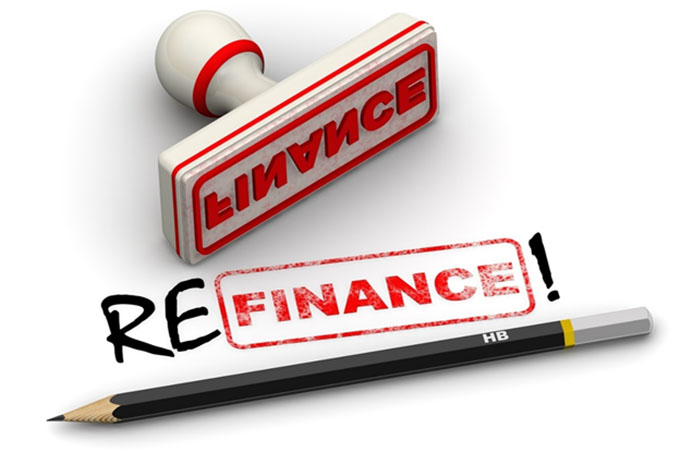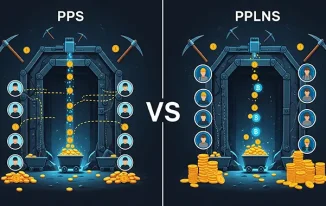When you think of how to offset your debt, many options come to mind. The more you try, the more it seems difficult. More so, it becomes more tiring when the interest keeps increasing. If you find yourself in this situation, one way to get out of it is to refinance the loan.
Some people see refinancing a loan as acquiring another burden. However, when it is done correctly, you will not have to worry at all. So, whether it is a consumer, personal, mortgage, or student loan, you can always refinance it. If you are considering this option but you do not know how to go about it, read on to learn more.
With debt refinancing, you will have extra funds to keep aside for your monthly savings. You will also have access to a loan with improved terms and conditions, as well as better interest rates. You can visit: infolific.com lav rente for more on getting low interest rates.
This article will review tips on how to refinance loans and the steps involved in getting one. Please keep reading as we explain more.
What does it Mean to Refinance a Loan?
Refinancing a credit refers to securing a new debt in a bid to repay the existing one. In simple terms, it involves taking out another credit to offset one or more outstanding debts. This is usually done by the borrower to secure low-interest rates and avoid repayment penalties.
For instance, a debtor who is trying to repay his debt can use another longer-term and low-interest rate credit. This is because the interest rate of refinancing debt is usually less.
Therefore, it allows the borrower to remove his current debt responsibility replacing it with a more favorable one. With this new arrangement, the terms and conditions of the old credit are inconsequential. The borrower can then redo his payment to enjoy a low installment payment, as well as, a convenient repayment schedule.
Factors to Consider Before Refinancing a Loan

The following are the factors that you need to consider before refinancing your credit:
Know What You Want
Debt refinancing is a procedure that requires you to make a decision first. These decisions inform your resolve to get another credit. So, it is not just an impromptu action. It is a carefully thought out process.
In doing this, a lot of options are weighed to find out whether it is worth it or not. At this point, rational decisions need to be made to suit your best interest. So, you must be intentional about everything that the refinance process entails.
Check Your Credit Score
After knowing what you want, you can then access your credit score. Your credit score goes a long way in determining whether you have a high chance of getting a new credit or not. This implies that if your credit score is high, you have a high chance of getting approval for credit and vice versa.
Lenders are very keen on this requirement because it gives them a clue to the financial history of the borrower. Therefore, be sure that your credit score will aid your refinancing bid.
Know your D-T-I ratio
Debt-to-Income (DTI) ratio is an index of the percentage of debt in proportion to income. It is simply the difference between debt and the money earned. It is usually calculated by summing up the list of expenses and dividing it by the income before tax deduction. The result, if low gives you a higher chance when it comes to lending.
Your DTI is a like a summary of your income and expenditure percentage.
Understand the Interest Rate And Terms
Interest rates and terms of loan agreements differ. The type of loan, lender, duration, and amount involved are some of the factors that determine the interest rate and terms and conditions set. As a result, interest rates and terms are not fixed. While refinancing a loan, it is important to keep these factors in mind.
As stated earlier, refinanced loans are usually at a low-interest rate and long term. However, do well to ensure that whatever option you intend to choose favors you. Also, ensure that the terms and conditions of the loan would be better than the previous one.
Check the Tax Rate
Paying taxes to the government is one civic responsibility that cannot be overlooked. Every loan has a tax rate attached to it. This may be high or low depending on the amount of credit involved. If you need more information about how the tax can be calculated, you can check here.
Steps Involved In Refinancing a Credit

The following are some of the steps involved in refinancing a loan:
Get the Application Form
Just like other types of loans, refinancing a loan require that you fill out an application form. The form requests basic information about you. This includes your name, address, current city, and the amount needed.
The application form is a formal request to the lender to lend you some money. The terms of lending are usually stipulated by the lender. Therefore, the borrower has to provide all the necessary and relevant documents like personal identification number, and passport. However, you should know that this is just an application form and not a loan agreement.
Additionally, if you are borrowing from the lender of the old debt, there may be no need to fill a fresh loan application form. A meeting with the lender will just do.
Submit the Form
After filing the form, you can go ahead to submit it to the lender. Always double-check to ensure that you filled in the right information.
Loan Agreement Preparation
This is usually done by the lender after the form has been checked and approved. The lender states in the agreement the terms and conditions of the credit, time frame, interest rate, collateral worth, and repayment schedule.
This step is one of the important steps in applying for loans. So, you should not be in a hurry to sign any agreement without understanding what it entails. It also contains the penalties and punishments for defaulting on the agreement.
Sign the Loan Agreement
After reading and understanding the loan agreement, you can go ahead to sign it. This is proof that you accept the terms and conditions of the loan. Also, agreeing to the terms and conditions of the credit means it is legally binding on you. So, you can be held accountable for any default of the agreement.
Wait for Approval
When the signing of the application form is done, the credit awaits approval. After approval, the funds will be released to you. This may take some days or even weeks depending on the lender and processes involved.
Once the fund is released, you can go ahead to pay off the old debt and other expenses. Make sure you are prudent in using the credit to obtain maximum benefits.
Conclusion
We have given a brief guide to refinancing a loan in the article. To this end, it is important that you check through your earnings and existing terms before you decide to refinance any debt. Also, check to confirm that the new loan has better offers than the old one. This could be in terms of interest rate and repayment term.
Do not forget the factors we have shared above. You can use them as a checklist before applying for credit. This process can also be done online with reputable and trusted lenders. However, when doing online financial transactions be extra careful so that you do not fall victim to fraudsters.














